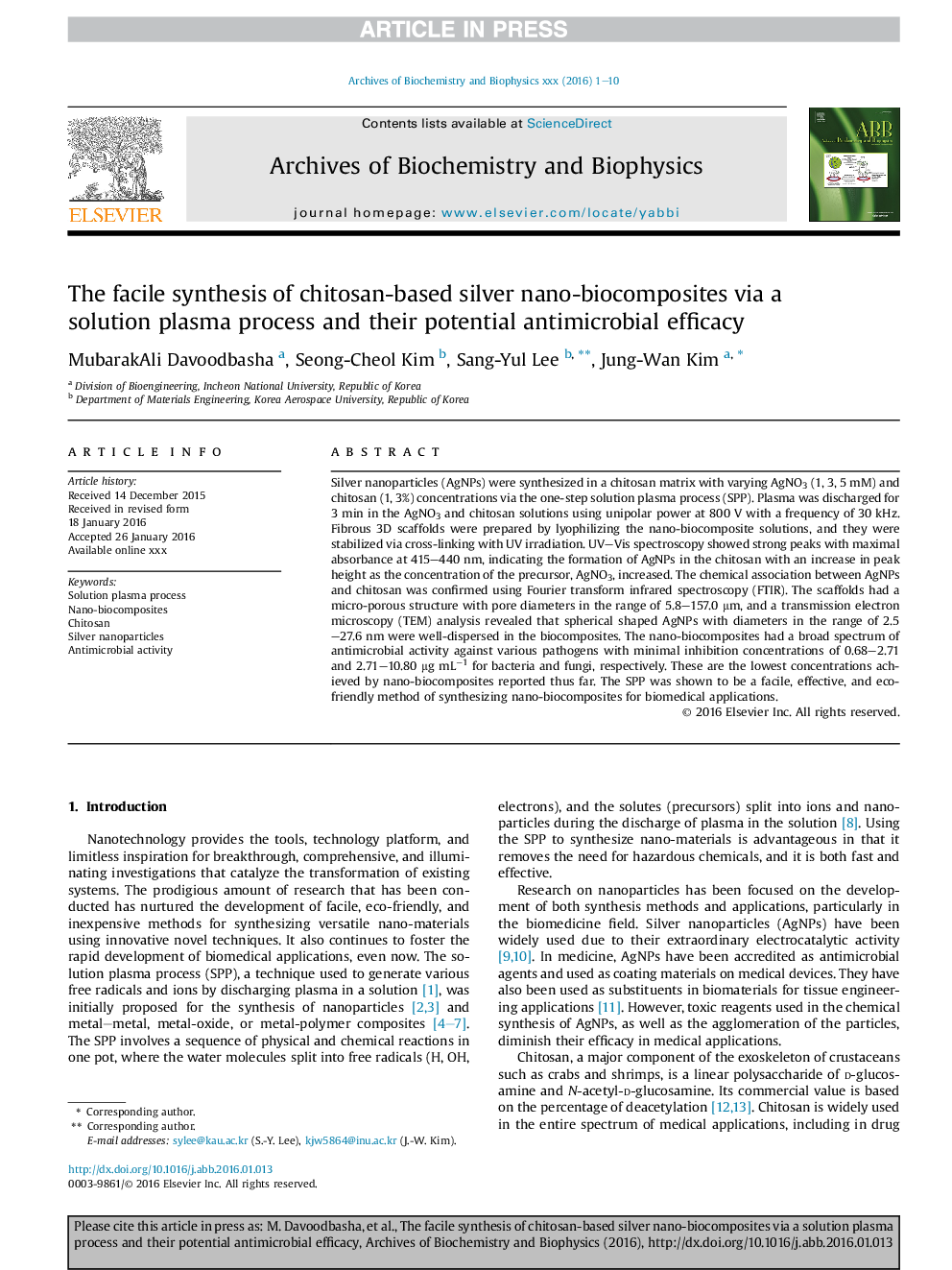| Article ID | Journal | Published Year | Pages | File Type |
|---|---|---|---|---|
| 8289045 | Archives of Biochemistry and Biophysics | 2016 | 10 Pages |
Abstract
Silver nanoparticles (AgNPs) were synthesized in a chitosan matrix with varying AgNO3 (1, 3, 5 mM) and chitosan (1, 3%) concentrations via the one-step solution plasma process (SPP). Plasma was discharged for 3 min in the AgNO3 and chitosan solutions using unipolar power at 800 V with a frequency of 30 kHz. Fibrous 3D scaffolds were prepared by lyophilizing the nano-biocomposite solutions, and they were stabilized via cross-linking with UV irradiation. UV-Vis spectroscopy showed strong peaks with maximal absorbance at 415-440 nm, indicating the formation of AgNPs in the chitosan with an increase in peak height as the concentration of the precursor, AgNO3, increased. The chemical association between AgNPs and chitosan was confirmed using Fourier transform infrared spectroscopy (FTIR). The scaffolds had a micro-porous structure with pore diameters in the range of 5.8-157.0 μm, and a transmission electron microscopy (TEM) analysis revealed that spherical shaped AgNPs with diameters in the range of 2.5-27.6 nm were well-dispersed in the biocomposites. The nano-biocomposites had a broad spectrum of antimicrobial activity against various pathogens with minimal inhibition concentrations of 0.68-2.71 and 2.71-10.80 μg mLâ1 for bacteria and fungi, respectively. These are the lowest concentrations achieved by nano-biocomposites reported thus far. The SPP was shown to be a facile, effective, and eco-friendly method of synthesizing nano-biocomposites for biomedical applications.
Keywords
Related Topics
Life Sciences
Biochemistry, Genetics and Molecular Biology
Biochemistry
Authors
MubarakAli Davoodbasha, Seong-Cheol Kim, Sang-Yul Lee, Jung-Wan Kim,
